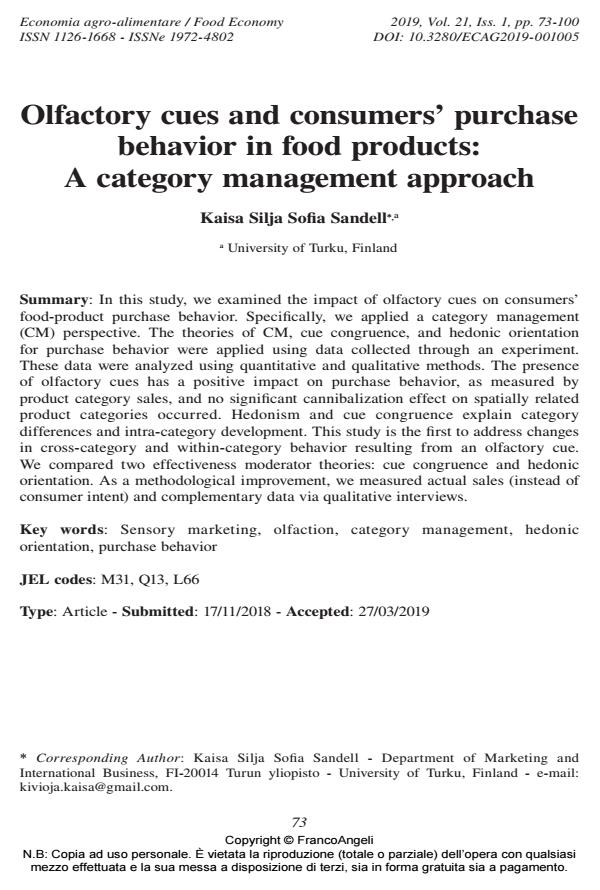Olfactory cues and consumers’ purchase behavior in food products: A category management approach
Journal title ECONOMIA AGRO-ALIMENTARE
Author/s Kaisa Silja Sofia Sandell
Publishing Year 2019 Issue 2019/1
Language English Pages 28 P. 73-100 File size 216 KB
DOI 10.3280/ECAG2019-001005
DOI is like a bar code for intellectual property: to have more infomation
click here
Below, you can see the article first page
If you want to buy this article in PDF format, you can do it, following the instructions to buy download credits

FrancoAngeli is member of Publishers International Linking Association, Inc (PILA), a not-for-profit association which run the CrossRef service enabling links to and from online scholarly content.
In this study, we examined the impact of olfactory cues on consumers’ food-product purchase behavior. Specifically, we applied a category management (CM) perspective. The theories of CM, cue congruence, and hedonic orientation for purchase behavior were applied using data collected through an experiment. These data were analyzed using quantitative and qualitative methods. The presence of olfactory cues has a positive impact on purchase behavior, as measured by product category sales, and no significant cannibalization effect on spatially related product categories occurred. Hedonism and cue congruence explain category differences and intra-category development. This study is the first to address changes in cross-category and within-category behavior resulting from an olfactory cue. We compared two effectiveness moderator theories: cue congruence and hedonic orientation. As a methodological improvement, we measured actual sales (instead of consumer intent) and complementary data via qualitative interviews.
Keywords: Sensory marketing, olfaction, category management, hedonic orientation, purchase behavior
Jel codes: M31, Q13, L66
Kaisa Silja Sofia Sandell, Olfactory cues and consumers’ purchase behavior in food products: A category management approach in "ECONOMIA AGRO-ALIMENTARE" 1/2019, pp 73-100, DOI: 10.3280/ECAG2019-001005